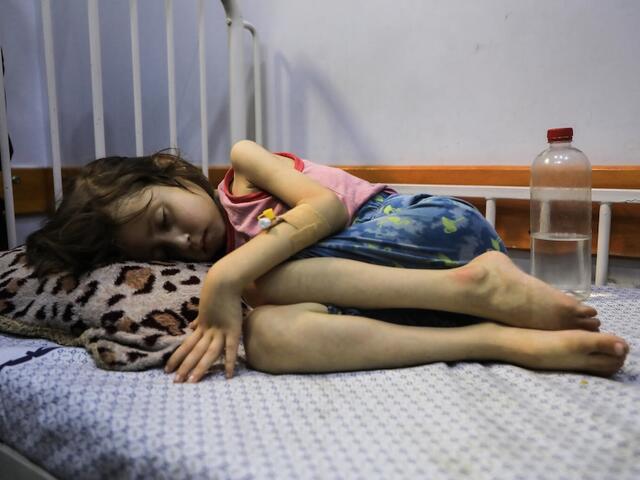- Famine has been officially confirmed in Gaza for the first time in the Middle East, according to the latest Integrated Food Security Phase Classification (IPC) analysis.
- The IPC reports that more than 500,000 people are in famine conditions marked by starvation, destitution and preventable deaths, with conditions projected to spread from Gaza Governorate to Deir al-Balah and Khan Younis in the coming weeks.
- UNICEF, the Food and Agriculture Organization (FAO), the World Food Programme (WFP) and the World Health Organization (WHO) called for an immediate ceasefire and unimpeded humanitarian access to save lives, according to the agencies.
The Big Picture
Famine has been officially confirmed in Gaza for the first time in the Middle East, according to the latest Integrated Food Security Phase Classification (IPC) analysis. The IPC reports that more than 500,000 people are in famine conditions marked by starvation, destitution and preventable deaths, with conditions projected to spread from Gaza Governorate to Deir al-Balah and Khan Younis in the coming weeks.
UNICEF, the Food and Agriculture Organization (FAO), the World Food Programme (WFP) and the World Health Organization (WHO) called for an immediate ceasefire and unimpeded humanitarian access to save lives, according to the agencies. They warned that any intensified military action in and around Gaza City would further endanger civilians already facing famine, including sick and malnourished children, older people and people with disabilities who may be unable to evacuate.
What’s New
The child malnutrition toll is rising sharply, according to UNICEF. 6,500 children were admitted to Gaza hospitals for malnutrition treatment in June. In July, an additional 13,000 children were diagnosed with acute malnutrition—the highest monthly figure on record and a six-fold increase from February. Twenty-four children under 5 died from malnutrition in July, bringing the total number of Palestinian children who have died from malnutrition since Oct. 2023 to 112, UNICEF reported. UNICEF also said the number of children expected to be at severe risk of death from malnutrition by the end of June 2026 has tripled—from 14,100 to 43,400.
Aid flows remain far below need, according to UNICEF. After nearly 11 weeks of a total blockade, only limited consignments have entered since May. By Aug. 20, 3,500 UN and international NGO trucks had reached the Karem Shalom and Zikim crossings, including 424 UNICEF trucks; 329 truckloads of UNICEF supplies—such as ready-to-use infant formula and complementary foods, high-energy biscuits, vaccines, diapers, and hygiene, dignity and disability kits—had been collected for distribution.
What They’re Saying
Context
Market conditions are worsening. Food prices are 150–700 percent higher than pre-conflict levels and many essential items are unavailable, according to UNICEF. Approximately 98 percent of cropland is damaged or inaccessible, decimating local agriculture, and nine in ten people have been repeatedly displaced from their homes, UNICEF reported. With cash critically scarce and supply routes constrained, agencies say needs are outpacing deliveries.
What’s Next
UNICEF, FAO, WFP and WHO say only a ceasefire, sustained humanitarian access at scale, and rapid deployment of therapeutic feeding and medical care can prevent further loss of life, according to the agencies.
The Bottom Line
Without those conditions, they warn, the scale of need will continue to outstrip aid capacity.
A global media for the latest news, entertainment, music fashion, and more.















